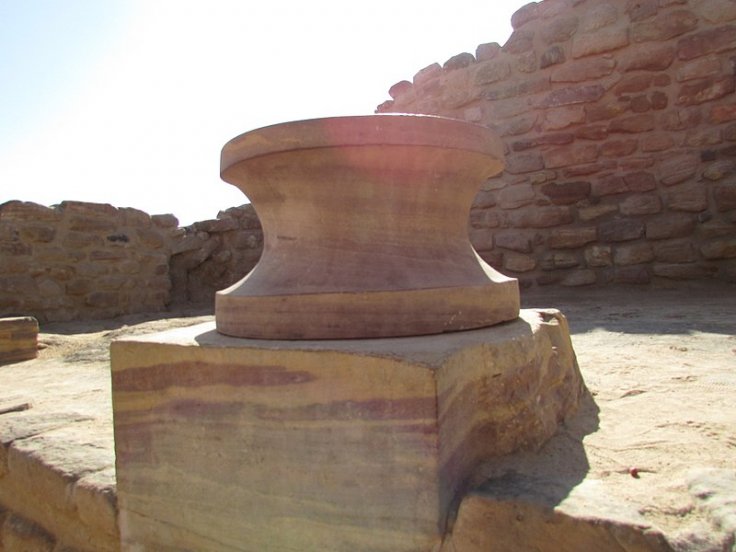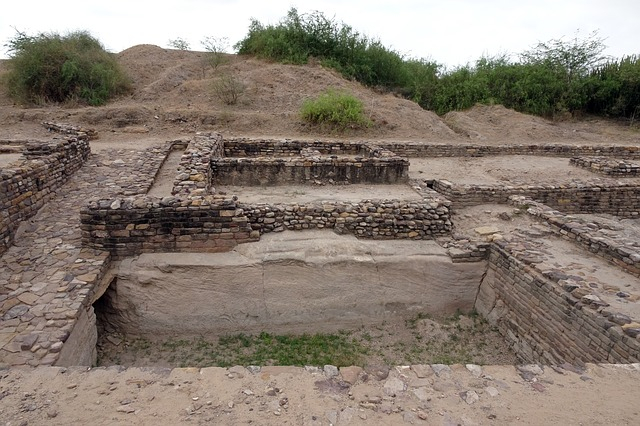The Harappan Civilization which is also known as Indus Valley civilization is believed to be the oldest civilization in the world. Over the years, many archaeologists tried to understand the cause of its decline and collapse in 2nd century BC.
Recently researchers from IIT Kharagpur, Archaeological Survey of India (ASI), Deccan College PGRI Pune, Physical Research Laboratory (PRL) and the Department of Culture, Gujarat have collected data from the Great Rann of Kutch which is a salt marsh in the Thar Desert in the Kutch District of Gujarat, India to explain why the Indus Valley Civilization suddenly vanished.
The new link with lost Kutch river
The researchers from India in their new study have connected the dots between the Harappan decline and the disappearance of a Himalayan river which once flowed over Rann of Kutch, but disappeared some 4000 years ago.
In a statement, published by IIT Kharagpur, it was said that for the first time the scientists found a connection between "the growth and decline of Dholavira, the most spectacular and largest excavated Harappan city in India located in the Rann with a river which resembles the mythical Himalayan river Saraswati." The clue to an extinct river's existence has made the study special now.

Recent finding of Indus Valley
As per the recently collected data, mangroves grew around the Rann and distributaries of Indus or other rivers dumped water in the Rann near the southern margin of Thar desert. Professor Anindya Sarkar, the lead researcher from IIT-KGP said, "this is the first direct evidence of glacial-fed rivers which are quite like the mythological Saraswati, flowing in the vicinity of Rann."
Two researchers from PRL Ahmedabad, Dr Ravi Bhushan and Navin Juyal have dated the carbonates from fish otolith and human bangles. After the analysis, they came to know that the site was occupied from 5,500 years ago which means pre-Harappan period to the late Harappan period.
It should be noted that the Indus Valley city expanded till 4400 years followed by an abrupt decline nearly 4000 years ago, claimed Dr RS Bisht and YS Rawat who were part of the research, which was published in the 'Wiley Journal of Quaternary Science'.

The lead researcher Sarkar stated that even though the Dholavirans, the residents of an archaeological site at Khadirbet in Bhachau Taluka of Kutch District, had successfully adopted water conservation strategy by building dams, reservoirs and pipelines, those ancient people were "pushed to the limit by a catastrophic mega-drought collapsing the city due to the drying up of the river."
He also mentioned that Dholavira presents a classic case to understand "how climate change can increase future drought risk" as predicted by the Intergovernmental Panel on Climate Change working group. Otherwise, the civilization's sudden decline gave rise to many theories and it remains a mystery. Some of the historians claimed that a collapse of trade with the Indus' major trading partner, Mesopotamia was the reason behind but on the contrary, others claim that war could have caused the demise of these ancient cities.
As per the Rigveda, ancient Indian collection of Vedic Sanskrit hymns, there is some reference to northern invaders conquering the Indus Valley. Later, when archaeologist Mortimer Wheeler discovered 39 human skeletons from Mohenjo-Daro in the 1940s, he claimed that they were killed by invaders though his theory remained questionable among many modern archaeologists.
Another study by the Indian Institute of Technology, Kharagpur (IITKGP) has argued that climate change caused human migration everywhere and so could it be in the collapse of the Indus Valley Civilisation (IVC). The study published in the journal Archaeological Research in Asia based its findings on the evidence from the sites at Karim Shahi in the GRK and Vigakot in Thar, where human habitation continued until 1000 AD.
Further, in 2018, DNA findings in a skeleton revealed that the Rakhigarhi bone evidence reiterates the fact that there was complete absence of any reference to the genetic marker R1a1, often loosely called 'the 'Aryan gene' during the civilization's existence.









